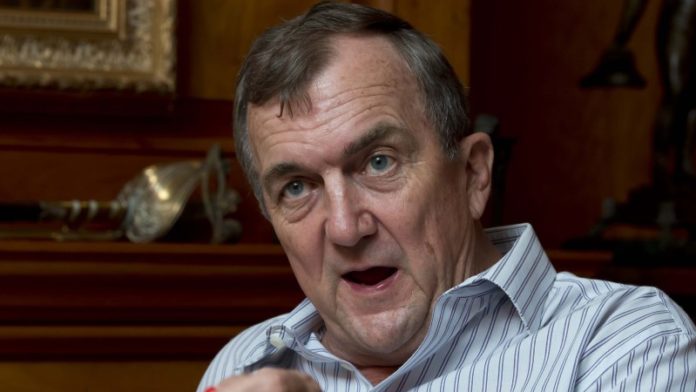
MARK Bristow, eased market fears regarding his tenure as the proposed president and CEO of Barrick Group, the company that will consist of the merged assets of his Randgold Resources and Barrick Gold, saying he would stay at the company for “as long as it takes” – a reference to the merger’s aim of creating the world’s best gold miner.
“We’ve been talking about succession plans [at Randgold] and we’re at a point where the succession will be implemented,” he said in a conference call today. “That will free me up, and Graham [Shuttleworth, CFO of Randgold and proposed CFO of Barrick Group] to do the bigger job of unlocking value in the merger,” he said.
He was responding to an analyst question which suggested that Bristow’s longevity was among the key concerns raised by the merger proposal, unveiled today. Bristow turns 60 next year and underwent full open heart surgery to replace an aortic valve in November. He told Miningmx in February – in reference to his continued role at Randgold – that he didn’t wish to be a CEO at 65, nor the company’s chairman.
“A number of investors inferred that Mr Bristow always meant such a ‘transformative deal’ to mark the apotheosis of his career,” said Charles Gibson, an analyst at Edison Investment Research in a note. “They will certainly want comfort now that he will stay for long enough to apply the same approach to Barrick’s assets before hanging up his spurs,” he said.
Bristow said the merger had given him a new lease on life. “It’s re-energising for me. I said I needed one more big gold mine to get me to the end of my career, and this [the merger with Barrick Gold] is one big gold mine,” he said. He indicated five years might be an appropriate time-frame to “shepherd” the business so that it would prevail for two decades or more. “Then I will crystallise my investment. This is not a job; it’s a business.”
Success for Bristow will be a company that owns six or seven tier one assets – described by Barrick Gold’s executive chairman and one of the deal architects, John Thornton, as production of 500,000 ounces annually and a 15% return on investment – and the ability to which the merged entity can generate free cash flow from pretax profits.
As a percentage of the gold mining industry, Randgold represents 3% of total earnings before interest, tax, depreciation and amortisation (EBITDA), but it represented 13% of the sector’s total free cash flow generated, said Bristow.
Thornton observed earlier that shares in Randgold had gained 96% in the last 10 years whilst the gold mining sector had fallen 50% on average over the same period. And whilst there had been a total impairment of assets of $75bn in that time, Randgold “… has not written down a single dime,” said Thornton.











